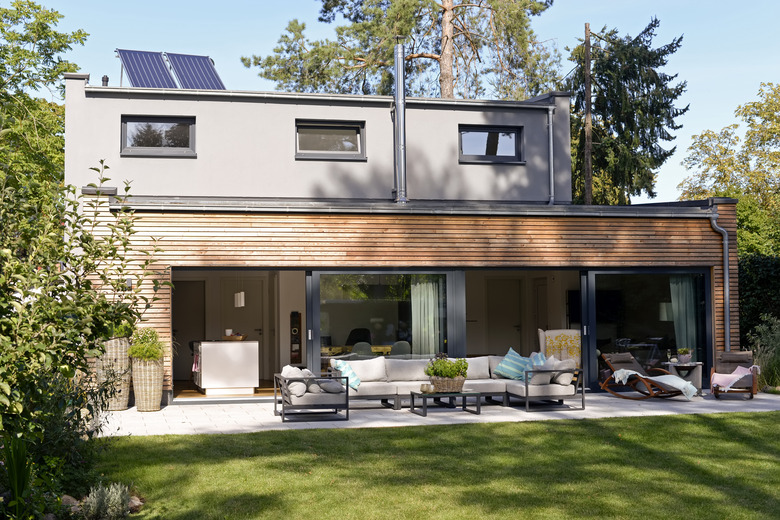What Should We Put Around The Foundation Of Our House To Prevent Mud Splatter On Windows?
Large windows, especially those that extend within 12 inches of the outside ground level, are particularly prone to getting dirty during rainstorms. As water drains off the roof and hits the ground, soil particles are splattered onto the house siding and lowest window panes. Newly constructed homes have this problem, in particular, as landscaping may not have yet been completed. Mud splattering may also occur on older homes where landscaping has degraded and bare soil is once again exposed.
Tip
To prevent mud spatter on exterior walls and windows, cover the soil with landscape fabric, gravel, organic mulches or a variety of low-growing plants.
Why Mud Splashes
Why Mud Splashes
The obvious cause of mud splatter on windows is exposed soil. However, other aspects of the landscape may contribute to the severity of platter. Soil should always slope away from the foundation to facilitate good drainage.
Low pockets, depressions or incorrect grading can lead to standing puddles of water after precipitation that splash more soil and mud. If a gutter and downspout system is installed at the base of the roof, rainwater doesn't haphazardly tumble down and crash to the loose, unprotected soil below.
Using Inorganic Coverings
Using Inorganic Coverings
Covering the bare soil under the windows with an inorganic material is an instant way to reduce or stop mud splatter. Inorganic materials do not decompose and need frequent replacement. A nylon landscape fabric may be laid to buffer the ground from falling water, but it isn't attractive when exposed.
Alternatively, you may put decorative gravel around the house foundation. Extend the gravel 24 inches away from the window base and foundation, in a layer that's 2 to 3 inches thick. Large-particle gravel is less likely to be washed or moved by the falling gush of water from the roof during a storm. Avoid using plastic sheeting as a ground cover.
Using Organic Mulch
Using Organic Mulch
If gravel is too expensive, or is determined to look too ugly or cause unwanted sunlight glare, organic mulch may be used. Large size mulch bits may be best, as rainfall deluges won't cause the heavier mulch pieces to be flung up onto windows or siding.
If the soil frequently floods and washes out during rain, mulch may float — unlike large rock pebbles — and erode away to again expose bare soil and cause splattering. Fibrous mulches, such as pine needles — also called pine straw — may be best as the porous needles interlock and do not wash away. Mulch is laid at a depth of 3 to 4 inches, and must be replenished annually because it decomposes.
Planting Vegetation as a Solution
Planting Vegetation as a Solution
An attractive way to alleviate window splash-back of soil and water during rainstorms is to cover the soil around the building foundation with low-growing plants. Choose sprawling, prostrate-growing plants so you do not block the views out of the windows. Lilyturf, mondo grass, turf grass, creeping phlox and creeping junipers are all viable options to cover the soil to prevent mud splashing.
Always choose a plant species that is well-suited to the light and soil conditions. Improper growing conditions, or climate, causes plants to deteriorate and quickly die. After planting the ground cover vegetation, you may also spread decorative gravel or mulch over the soil to make the bed look more attractive and prevent mud splashing until the plants grow into a dense, widespread carpet.
